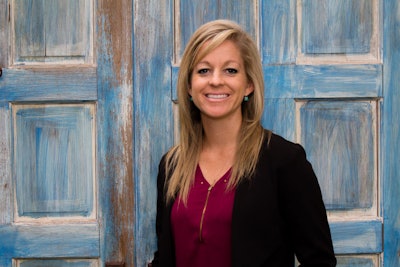As we begin another academic year, it is important to remember during the beginning-of-semester excitement that many students will not be returning to campus to complete their studies. Retention can be a problem for universities, specifically for those students who have been traditionally underserved. The Education Department reports that one-third of first-generation college students leave school, compared to one-quarter of classmates whose parents have university degrees.
At New Mexico State University’s College of Engineering, we have increased our retention of first-year students who enroll in the Introduction to Engineering course by more than 5 percent since 2014. And it could be more. This positive trend is in direct conflict with contemporaneous national enrollment data from the National Center for Education Statistics, citing 8 percent and 5 percent decreases in female and male students, respectively. When it comes to keeping familiar faces on campus, we think our implementation of engaging spaces and programs is the difference for NMSU Engineering.
 Elizabeth Howard
Elizabeth HowardIn 2014, we started the Freshman Year Experience program, requiring students to take Engineering 100 – the introductory course in which students encounter design processes, develop technical and communication skills and learn through a teamwork-based classroom model. Three years later, we opened an Engineering Learning Community. It is an active learning space where faculty and students gather after class. We host collaborative workshops, weekly social events, peer mentoring and speakers in the ELC, engaging our students early in the world of engineering. We believe increased retention is directly related to the Freshman Year Experience program and that the ELC has bolstered that retention.
In our efforts to retain students, especially as a Hispanic serving institution (HSI), we have focused on Latina and Hispanic female students – the crossroads of two underserved populations in the engineering industry. Since the 1970s, women’s representation in higher education and the workforce has increased, but women are still significantly underrepresented in STEM fields. According to the Department of Commerce, Economics and Statistics Administration, women in engineering made up only 14 percent of the workforce – a percentage that has not changed since 2009. While nearly the same amount of men and women are degree-holders, women make up only 30 percent of STEM graduates, the lowest number being in engineering. In addition to the lack of women engineers, there is a lack of Hispanics in engineering, the American Association of University Women found. Only 7 percent of the engineering workforce is made up of Hispanics, whereas 71 percent are non-Hispanic White.
Four years after first implementing active learning, we’ve asked ourselves: What more can we do to better serve these students?
Because of the success of our first collaborative course and space, we decided to apply for an Active Learning Center Grant from Steelcase Education. Now, we’re refurbishing a 1,000-square-foot space at the Engineering College with Steelcase furniture. Our goals for the new Active Learning Center are: collaboration, removing barriers to learning (physical and organizational), ensuring students get the help they need to complete difficult classes and degree programs, and helping students develop interpersonal and intrapersonal skills so they can excel at work and bring engineering expertise back to their communities. These goals will aid our overarching aim of increased student retention and diversity in engineering.
The space, whose best asset was its large windows before the installation of the Steelcase furniture, is the classroom that houses Engineering 100. Most projects are completed by groups of four students, and these projects address real-world problems from pulley design competitions to MATLAB coding assignments. The current traditional lecture-style setup of the room does not suit the collaborative nature of Engineering 100, and that’s why we’re installing the Steelcase zoned classroom, specifically designed to support multiple, simultaneous activities. By transforming the classroom into an active learning space, we are building on our efforts to better engage and serve our students, matching the environment to the already-collaborative nature of Engineering 100.
To measure our goals, we are tracking three main criteria: (1) freshman to sophomore year retention (i.e. those taking Engineering 100 and using the new active learning space); (2) Hispanic and Latina freshman women retention; (3) data, focus groups and other observations. With the success of our first active learning course and center, we are confident the Steelcase classroom will benefit our students and increase retention.
As an HSI with a student population that is 54 percent Hispanic/Latino and 53 percent female, NMSU is uniquely situated to improve diversity in engineering. To promote the success of Hispanic/Latina and women engineers, it is important that we create an educational environment that trains all engineers to work with diverse team members in a collaborative setting. With the Steelcase Active Learning Center, we anticipate an increase in retention for all students. Coupled with the NCES’s projected uptick in national college enrollment through 2025, we are doubly optimistic about the future of engineering.
I believe that the only way we can improve education, especially for those who have been traditionally underserved, is to try new strategies – strategies that can provide pathways for our students to achieve their goals. In NMSU Engineering’s experience, active learning spaces are a crucial step in the right direction.
Elizabeth Howard is program manager of student affairs in the College of Engineering at New Mexico State University. She is currently pursuing a Ph.D in Higher Education Leadership and Administration.


















